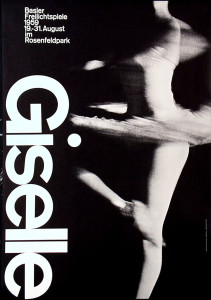[amazon template=image&asin=0300106769]
[amazon template=add to cart&asin=0300106769]
Swiss Graphic Design: The Origins and Growth of an International Style, 1920-1965
Swiss graphic design and “the Swiss Style” are crucial elements in the history of modernism. During the 1920s and ’30s, skills traditionally associated with Swiss industry, particularly pharmaceuticals and mechanical engineering, were matched by those of the country’s graphic designers, who produced their advertising and technical literature. These pioneering graphic artists saw design as part of industrial production and searched for anonymous, objective visual communication. They chose photographic images rather than illustration, and typefaces that were industrial-looking rather than those designed for books.
Written by noted design authority Richard Hollis, this lavishly illustrated volume looks at the uniquely clear graphic language developed by such Swiss designers as Theo Ballmer, Max Bill, Adrian Frutiger, Karl Gerstner, Armin Hoffman, Ernst Keller, Herbert Matter, Josef Müller-Brockmann, and Jan Tschichold. The style of these artists received worldwide admiration for its formal discipline: images and text were organized by geometrical grids. Adopted internationally, the grid and sans serif typefaces such as Helvetica became the classic emblems of Swiss graphic design.
Showcasing design work across a range of media, including posters, magazines, exhibition displays, brochures, advertisements, books, and film, this essential book shows how many of the Swiss designers’ modernist elements remain an indispensable part of today’s graphic language. www.amazon.com

Often referred to as the International Typographic Style or the International Style, the style of design that originated in Switzerland in the 1940s and 50s was the basis of much of the development of graphic design during the mid 20th century. Led by designers Josef Müller-Brockmann at the Zurich School of Arts and Krafts and Armin Hofmann at the Basel School of Design, the style favored simplicity, legibility and objectivity. -Design Is History.



